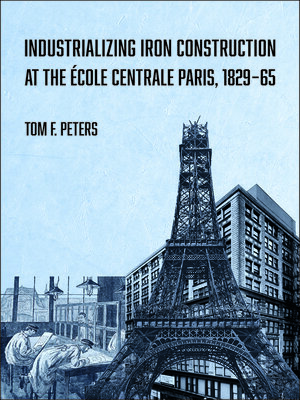
Sign up to save your library
With an OverDrive account, you can save your favorite libraries for at-a-glance information about availability. Find out more about OverDrive accounts.
Find this title in Libby, the library reading app by OverDrive.



Search for a digital library with this title
Title found at these libraries:
| Library Name | Distance |
|---|---|
| Loading... |
As industrialization began to evolve in the early nineteenth century, engineers were urgently needed to integrate science into the field of construction. They needed to learn how to innovate and understand the new material—iron. Industrializing Iron Construction at the École Centrale Paris, 1829–1865 explains a novel response to that need, a successful new school to educate civil and structural engineers, architects, contractors, and industrialists who would become major players in the development of modern iron construction. Among them were two of the most prominent creators of our modern world—Eiffel, of the thousand-foot tower, and Jenney, of Chicago skyscraper fame.
The École Centrale des Arts et Manufactures in Paris created a unique pedagogy that taught not only how to solve problems, but how to innovate. This is the lively account of how that happened. It traces the sources of French education in engineering and architecture and follows the careers and ideas of the chief players. Familiar faces like the architect Jean-Nicolas Louis Durand, the École Polytechnique's founder Gaspard Monge, the bridge builder Jean-Rodolphe Perronet, and the theoretician Gaspard Riche de Prony appear in a new light. Half-remembered pioneers like the railway builder Eugène Flachat gain prominence. Forgotten innovators like César Leblanc, the creator of technical drafting, or Alphonse Halbou, who patented the rolled I-beam, resurface. New names like Auguste Perdonnet, a railway promotor, the theoretician Jean-Baptiste Bélanger, or the three-generation Roussel contracting family emerge. Even the French empress Eugénie takes an active part in the development. The school's success was a product of the interaction of its pioneers, their collaborations, and their clashes. Industrializing Iron Construction at the École Centrale Paris, 1829–1865 uncovers new sources to view icons of nineteenth-century construction from a fresh perspective. Structures we know so well suddenly emerge in a new light. The reading room of the Bibliothèque nationale de France, the iron-framed Moulin Menier, or the record-spanning Galerie des Machines point the way to a new understanding of structure and construction. A brand-new school created by an enthusiastically motivated group of innovators initiated our modern age in engineering and architectural education.







